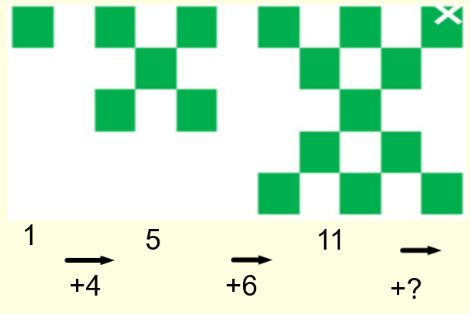Patterns in Maths
This term, we have spent some of our learning time observing and identifying patterns in Maths. This began quite simply with illustrations, but we soon moved onto more complex investigations by building links found in our multiplication and division unit.
It started because of this statement from the NCETM:
Seeking and exploring patterns is at the heart of mathematics (Schoenfeld, 1992). Developing an awareness of pattern helps young children to notice and understand mathematical relationships. Clements and Sarama (2007) identify that patterns may provide the foundations of algebraic thinking, since they provide the opportunity for young children to observe and verbalise generalisations.
Also supported by this from Nrich:
Research has found that young children's ability to spot mathematical patterns can predict later mathematical achievement, more than other abilities such as counting (Rittle-Johnson et al, 2016). Research has also found that pattern awareness can vary a great deal between individuals: we have all noticed children who arrange objects in radial patterns or make constructions with reflective symmetry, while others pay no attention to pattern at all.
https://nrich.maths.org/
These statements can lead to questions of how to support our children to develop that pattern awareness and logical thinking. What can we add to their toolkit and how would we do it?
This is especially valuable when considering the individual members of our cohorts will still need support from missed learning from covid lockdowns.
Spending time observing and discussing visual patterns and basic diagrams has been a valuable investment of classroom time.This has been very successful in developing the children's love of maths as well as encouraging learning characteristics such as building links and curiosity within their learning. The collaborative learning that has developed from their shared observations has been great to grow an investigative culture within the classroom.
The children have spent time drawing the patterns and verbalising their predictions and eventually drawing those. The most valuable of all this has been the vocabulary and question stems that the children developed themselves when approaching a pattern. We found that asking questions such as:
- What's the same?
- What's different?
- Can I describe how it has changed?
- Is there a rule?
- How could I express this as a calculation or number sentence?
Not only do the children have to evaluate their understanding of a sequence quite deeply, they also have to communicate their individual and group observations which can really help expose their true understanding and allow others to see what they aren't seeing at the time.
Below are a few examples of the children's learning and a website full of resources that has been very useful.
https://www.visualpatterns.org/
Written by Henry Huxtable, Maths Lead, Borders Partnership




